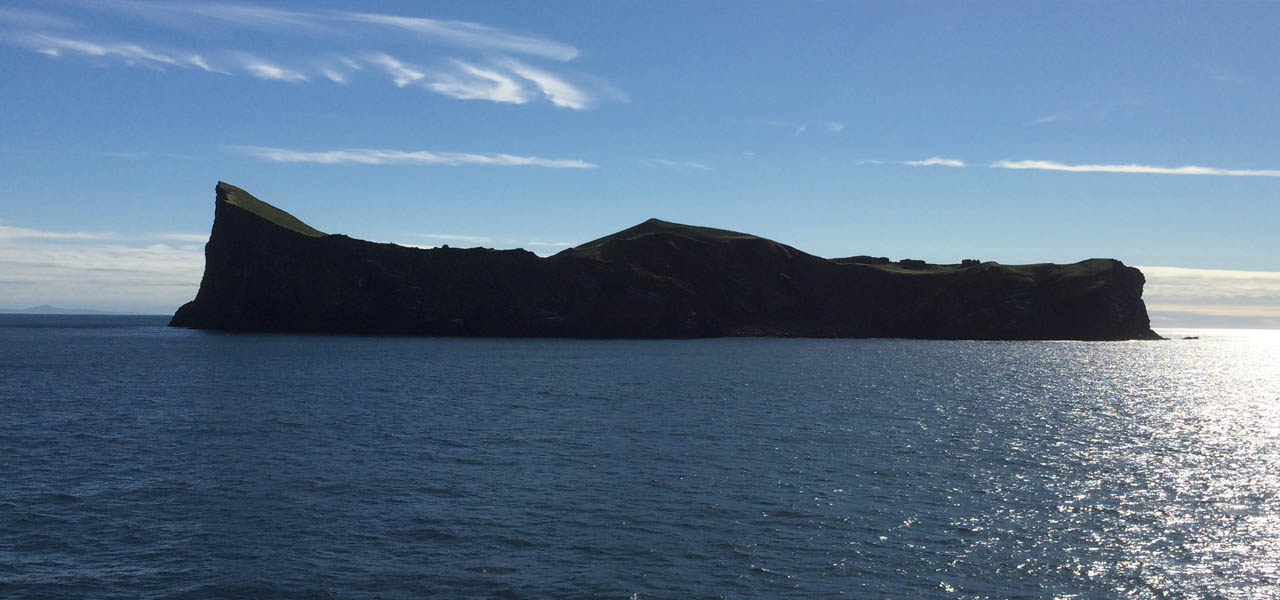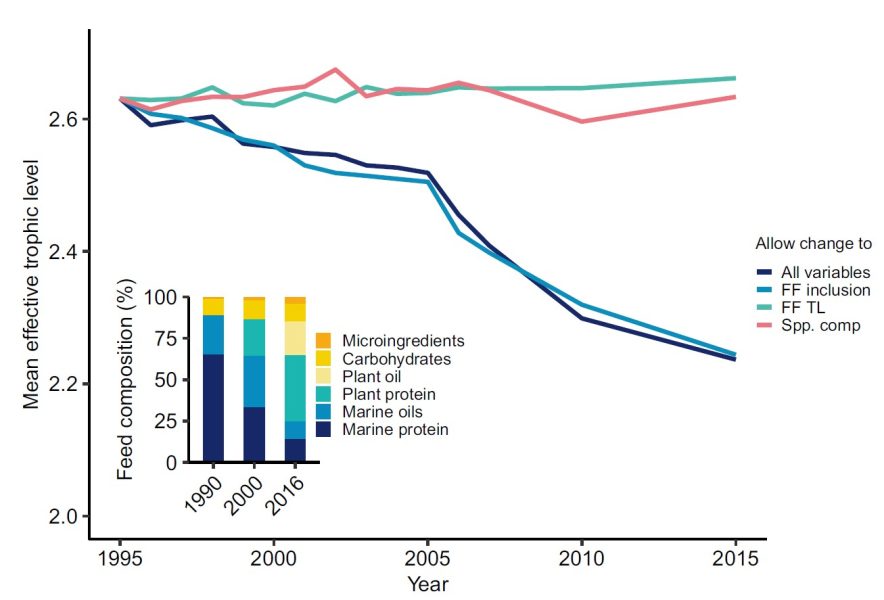
Are plant fed fish more sustainable?
2022.12.1
A new article entitled “Time to rethink trophic levels in aquaculture policy” reviews the use of trophic levels as indicator for sustainability in aquaculture policy . The trophic level is an indicator for an animals energy-wise placement in the food chain. In general plant eating fishes are at low trophic levels (<2.5) whereas carnivour fishes are at high trophic levels (>2.5). The aquaculture policy considers the low trophic level fishes more sustainable – a vegan fish is a more sustainable fish. The article authors question this aquaculture policy.
Stagnation in global catches of wild forage fish, competition from other economic sectors and the enormous expansion of aquaculture production over the past 30 years has driven substantial shifts in the formulation of aquaculture feeds. For example, feeds for Atlantic Salmon (Salmo salar) farmed in Norway have reduced total fish protein (fishmeal) inclusion from 65% in 1990 to under 15% in 2016, largely by replacement with plant-based proteins, oils and carbohydrates. Such shifts in the feeds provided to carnivorous species have been possible due to advances in aquaculture nutrition, such as better understanding of the importance of supplementing diets with essential, conditionally essential and non-essential amino acids, and the effects of aquafeed processing on digestibility.
According to the article the shift in dietary composition means that most farmed fish species have steadily reduced the trophic level compared to wild living fishes. It is the reduced inclusion of fishmeal and oil in feeds for farmed fish species that has overwhelmingly reduced the trophic level.
Focusing on trophic level as a metric of sustainability omits important aspects of resource efficiency, health and sustainability issues. Some carnivorous species retain certain key nutrients more efficiently than species of a lower trophic level. Healthy growth and development of marine fishes depends on marine ingredients (fishmeal and fish oil) in their feed.
There has been a widespread lack of consideration for the consequences of displacing the burden of sourcing future aquafeeds from marine to terrestrial environments. For instance, the sustainability of terrestrial feed ingredients is only now being added as a consideration within the Aquaculture Stewardship Council certification standards.
A key goal of aquaculture development should be to create species-diverse and nutrient-diverse food sources that remain accessible and appropriate to people across regions and economies. Realising the potential of aquaculture to promote environmental sustainability requires integration of diverse goals, including food system stability, economic development and global equity.
The article authors concludes that guidance based on wild trophic position or historical resource use is misleading. Effective aquaculture policy needs to avoid overly simplistic sustainability indicators such as trophic level. Instead, employing empirically derived metrics based on the specific farmed properties of species groups, management techniques and advances in feed formulation will be crucial for achieving truly sustainable options for farmed seafood. Read the article here.





